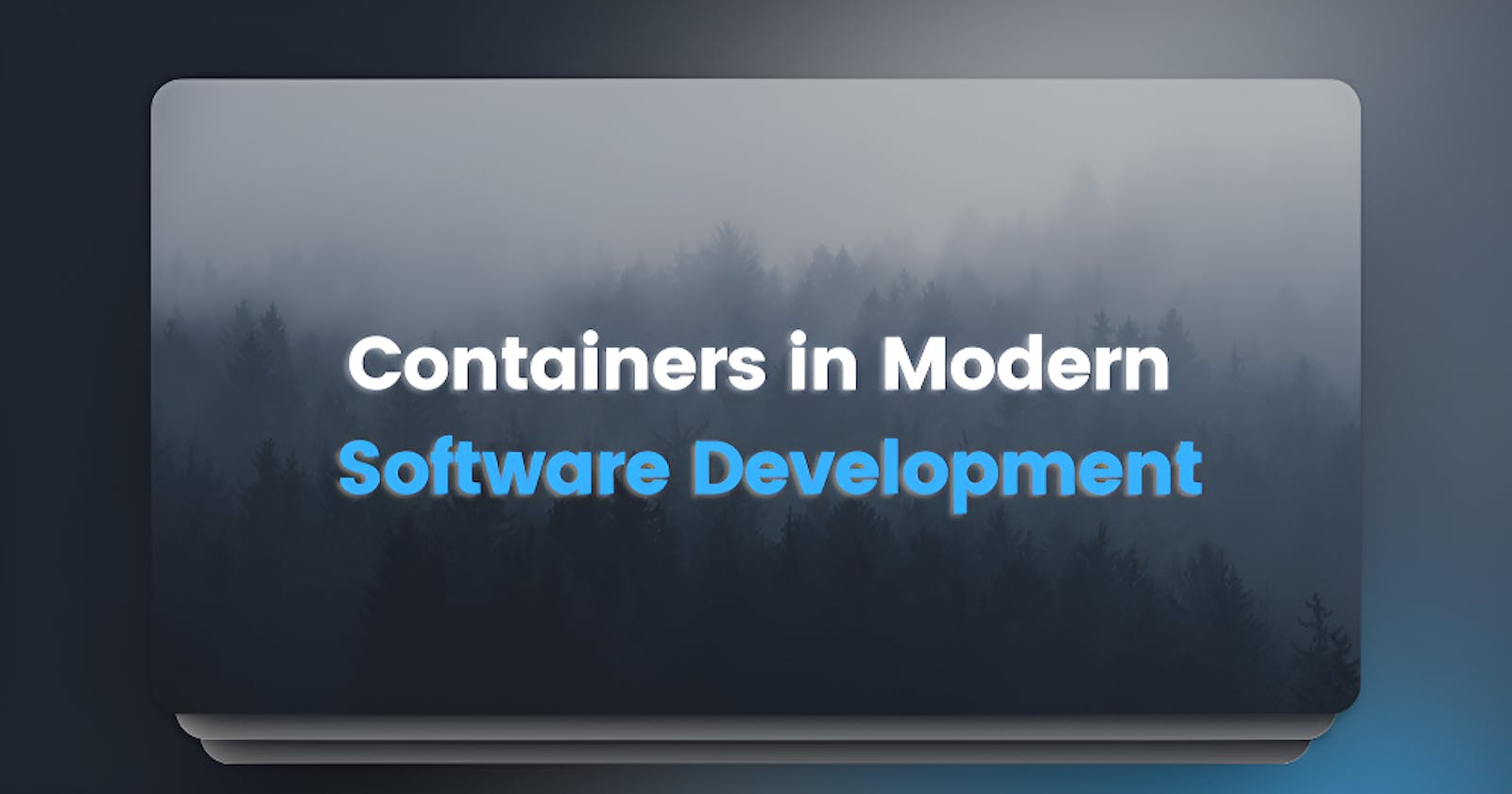The Role of Containers in Modern Software Development

Containers have revolutionized software development by providing a lightweight and flexible solution for packaging and deploying applications.
In this article, we will explore the role of containers in modern software development and how they have transformed the way developers build, test, and deploy their applications. We will delve into the benefits of using containers, and popular containerization tools, and address common questions related to this topic.
Benefits of Containers in Software Development
Increased Portability and Scalability
Containers enable developers to package an application and all its dependencies into a single, self-contained unit. This ensures that the application runs consistently across different environments, regardless of the underlying infrastructure. Whether it's a developer's local machine, a test server, or a production environment, the container provides a consistent runtime environment, making it highly portable.
Containers also offer easy scalability, allowing developers to quickly spin up multiple instances of an application to meet varying workload demands. With containers, scaling an application becomes a seamless process, ensuring efficient resource utilization.
Isolation and Dependency Management
One of the key advantages of containers is their ability to provide isolation between applications and their dependencies. Each container encapsulates the necessary components and libraries required for an application to run, eliminating potential conflicts with other applications on the same system. This isolation ensures that any changes or updates to one container do not impact other containers or the host system.
Containerization also simplifies dependency management by encapsulating all the necessary software libraries within the container image. Developers no longer need to worry about conflicting library versions or spend time configuring dependencies manually. This simplifies the development process and improves the overall stability and reliability of the application.
Rapid Application Deployment and Testing
Containers enable rapid deployment and testing of applications. By packaging the application and its dependencies into a container image, developers can ensure that the application behaves consistently across different environments. This eliminates the "it works on my machine" problem and streamlines the deployment process.
Moreover, containers facilitate continuous integration and continuous deployment (CI/CD) workflows. Developers can easily integrate containers into their CI/CD pipelines, allowing for automated testing and deployment. This accelerates the software development lifecycle, reduces time to market, and enhances overall productivity.
Popular Containerization Tools
Docker
Docker is undoubtedly the most popular containerization platform used in modern software development. It provides a comprehensive set of tools and features that simplify the process of creating, deploying, and managing containers. Docker allows developers to build container images using a declarative Dockerfile, which specifies the steps required to assemble the application's environment. With its vast ecosystem and community support, Docker has become the de facto standard for containerization.
Kubernetes
Kubernetes is an open-source container orchestration platform that helps manage and scale containerized applications. It provides a robust framework for automating deployment, scaling, and management of containerized workloads. Kubernetes ensures high availability, fault tolerance, and easy scaling of containers across clusters of machines. It also offers powerful features such as service discovery, load balancing, and self-healing capabilities, making it an ideal choice for running containerized applications at scale.
Other Containerization Tools
While Docker and Kubernetes dominate the containerization landscape, there are other notable containerization tools worth mentioning:
Podman: An alternative to Docker that focuses on compatibility and security.
rkt: A container engine developed by CoreOS, emphasizing security and simplicity.
LXC/LXD: Linux Containers (LXC) and Linux Container Daemon (LXD) provide lightweight containerization capabilities at the OS level.
Conclusion
Containers have transformed modern software development by providing a lightweight, portable, and scalable solution for packaging and deploying applications. Their benefits include increased portability, isolation, rapid deployment, and simplified dependency management.
Docker and Kubernetes are the leading containerization tools, while other options like Podman, rkt, LXC/LXD also have their merits. By leveraging containers, development teams can streamline their workflows, improve efficiency, and accelerate the delivery of reliable software.
Thanks for reading 🫡, See you in the next article.
FAQs
1. What are the main advantages of using containers in software development?
Containers offer increased portability, scalability, isolation, and simplified dependency management. They enable rapid application deployment, testing, and integration with CI/CD workflows.
2. How do containers improve the efficiency of software development teams?
Containers streamline the development process by providing a consistent and reproducible runtime environment. They eliminate dependency conflicts, reduce deployment issues, and enhance collaboration between team members.
3. Are containers suitable for all types of applications?
Containers are versatile and can be used for a wide range of applications, including web services, microservices, data processing pipelines, and more. However, certain legacy applications or those with specific hardware requirements may not be well-suited for containerization.
4. What security measures should be taken when using containers?
To ensure container security, it is essential to regularly update container images, restrict container privileges, apply resource limits, and monitor containers for any vulnerabilities. Additionally, adopting best practices such as image scanning and using trusted sources for container images helps mitigate security risks.
5. How do containers differ from virtual machines (VMs)?
Unlike VMs, containers share the host operating system kernel, resulting in a more lightweight and efficient runtime environment. Containers also start up faster and consume fewer resources compared to VMs. However, VMs provide stronger isolation between applications.
6. Can containers be used in combination with other technologies?
Absolutely! Containers are often used in conjunction with other technologies such as microservices, serverless computing, and cloud platforms. They complement these technologies by providing a consistent packaging and deployment mechanism.
 Develop and Solve
Develop and Solve